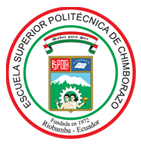EVALUACIÓN DE LA ACTIVIDAD ANTIINFLAMATORIA Y CITOTÓXICA DE ATRANORINA Y DILACTONA DEL ÁCIDO PULVÍNICO: COMPUESTOS FENÓLICOS BIOACTIVOS DEL LÍQUEN
DOI:
https://doi.org/10.47187/perf.v1i19.24Palabras clave:
Parmelina tiliacea, liquen, actividad antiinflamatoria, citotoxicidad, WST-1Resumen
Parmelina tiliacea es una especie de liquen de Ecuador que ha sido poco estudiada en relación a sus potenciales aplicaciones. La investigación se llevó a cabo con el objetivo de establecer la actividad antiinflamatoria y citotóxica de P. tiliacea, mediante un método celular in vitro basado en el uso de una sal de tetrazolio solu- ble (WST-1) sobre neutrófilos aislados. Las moléculas de atranorina y dilactona del ácido pulvínico fueron aisladas del liquen P. tiliacea mediante métodos cromatográficos (cromatografía flash en columna y TLC). Los compuestos fueron identificados con la ayuda de estudios espectroscópicos (UV e IR), cromatográficos (TLC) y pruebas de identificación específicas para compuestos liquénicos usando reactivos químicos establecidos para este tipo de moléculas. Los resultados de actividad citotóxica mostraron una reducción de la viabilidad celular hasta un 15 – 20% a una concentración de 200 μg/mL de ambos compuestos identificados. A la misma concentración de 200 μg/mL, la actividad antiinflamatoria de atranorina, dilactona del ácido pulvínico y ácido acetilsalicílico (control positivo) fueron 75.92±0.73%, 73.65±0.44% y 83.77±0.47%, respectivamente. Este estudio constituye la base para investigaciones posteriores sobre líquenes en el Ecuador.
Descargas
Citas
Oukarroum A, El Gharous M, Strasser RJ. Does Parmelina tiliacea lichen photosystem II survive at liquid nitrogen temperatures? Cryobiology [Internet]. 2017 [citado el 22 Enero 2018]; 74: 160–2. Dispo- nible en: http://dx.doi.org/10.1016/j.cryobiol.2016.12.005.
Cevallos-Solórzano G. Checklist de líquenes y hongos liquenícolas de Ecuador continental. 2012. Con- servación de la Diversidad Biológica. Universidad Rey Juan Carlos; 37 p.
Bolognese A, Chioccara F, Scherillo G. Phytochemical reports. Phytochemistry. 1974; 13: 1989–90.
Melo MGD, Araújo AAS, Rocha CPL, Almeida EMSA, Siqueira RDS, Bonjardim LR, et al. Purifica- tion, physicochemical properties, thermal analysis and antinociceptive effect of atranorin extracted from Cladina kalbii. Biol Pharm Bull. 2008; 31(10): 1977–80.
Melo MGD, dos Santos JPA, Serafini MR, Caregnato FF, de Bittencourt Pasquali MA, Rabelo TK, etal. Redox properties and cytoprotective actions of atranorin, a lichen secondary metabolite. Toxicol Vitr.2011; 25(2): 462–8.
Bugni TS, Andjelic CD, Pole AR, Rai P, Ireland CM, Barrows LR. Biologically active components of a Papua New Guinea analgesic and anti-inflammatory lichen preparation. Fitoterapia. 2009; 80(5): 270–3.
Ijima H, Ebizuka Y, Sankawa U, Yamamoto E, Towers GHN. An inducible lactone hydrolase yielding2, 5-diphenyl-3-hydroxy-4-oxo-2hexendioic acid from pulvinic acid. Phytochemistry. 1983; 22(2): 371–4.
Fernandes RF, Ferreira GR, Spielmann AA, Edwards HGM, De Oliveira LFC. FT-Raman spectroscopy of the Candelaria and Pyxine lichen species: A new molecular structural study. J Mol Struct [Internet]. 2015 [citado el 22 Enero 2018]; 1102: 57–62. Disponible en: http://dx.doi.org/10.1016/j.molstruc.2015.08.040
Elix JA. A catalogue of standardized chromatographic data and biosynthetic relationships for lichen substances. Third Edition. Published by the author, Canberra (Australia). 2014. 323 p.
Huneck S, Yoshimura I. Identification of Lichen Substances. Springer-Verlag Berlin Heidelberg; 1996. 493 p.
Siddiqui RA, English D, Harvey K, Cui Y, Martin MI, Wentland J, et al. Phorbol ester-induced priming of superoxide generation by phosphatidic acid-stimulated neutrophils and granule-free neutrophil cyto- plasts. J Leukoc Biol. 1995; 58(2): 189–95.
Choudhary MI, Jalil AS, Rahman A. Bioactive phenolic compounds from a medicinal lichen , Usnea longissima. Phytochemistry. 2005; 66: 2346–50.
Berridge M V, Tan ANS, Mccoy KD, Wang RUI. The Biochemical and Cellular Basis of Cell Prolife- ration Assays That Use Tetrazolium Salts. Biochemica. 1996; (4): 14–9.
Tan AS, Berridge M V. Superoxide produced by activated neutrophils efficiently reduces the tetrazo- lium salt, WST-1 to produce a soluble formazan: a simple colorimetric assay for measuring respiratory burst activation and for screening anti-inflammatory agents. J Immunol Methods. 2000; 238: 59–68.
Macdonald TM, Beard K, Bruppacher R, Hasford J, Lewis M, Logan RF, et al. The safety of drugs for OTC use: what evidence is required for an NSAID switch? Pharmacoepidemiol Drug Saf. 2002; (11): 577–84.
Martin C, Connelly A, Keku TO, Mountcastle SB, Galanko J, Woosley JT, et al. Nonsteroidal Anti-inflammatory Drugs, Apoptosis, and Colorectal Adenomas. Gastroenterology. 2002; (123): 1770–7.
Kumar KC S, Müller K. Lichen metabolites. 2. Antiproliferative and cytotoxic activity of gyrophoric, usnic, and diffractaic acid on human keratinocyte growth. J Nat Prod. 1999; 62(6): 821–3.
Barreto RSS, Albuquerque-Júnior RLC, Pereira-Filho RN, Quintans JSS, Barreto AS, DeSantana JM, et al. Evaluation of wound healing activity of atranorin, a lichen secondary metabolite, on rodents. Brazi- lian J Pharmacogn [Internet]. 2013 [citado el 22 Enero 2018]; 23(2): 310–9. Disponible en: http://dx.doi. org/10.1590/S0102-695X2013005000010
Holanda Pinto SA, Pinto LMS, Guedes MA, Cunha GMA, Chaves MH, Santos FA, et al. Antinocep- tive effect of triterpenoid α,β-amyrin in rats on orofacial pain induced by formalin and capsaicin. Phyto- medicine. 2008; 15(8): 630–4.
Siqueira RS, Bonjardim LR, Araújo AAS, Araújo BES, Melo MGD, Oliveira MGB, et al. Antino- ciceptive activity of atranorin in mice orofacial nociception tests. Zeitschrift fur Naturforsch - Sect C J Biosci. 2010; 65 C (9–10): 551–61.
Siqueira-Lima PS, Silva JC, Quintans JSS, Antoniolli AR, Shanmugam S, Barreto RSS, et al. Na- tural products assessed in animal models for orofacial pain – a systematic review. Rev Bras Farmacogn [Internet]. 2017 [citado el 22 Enero 2018]; 27(1): 124–34. Disponible en: http://linkinghub.elsevier.com/ retrieve/pii/S0102695X16301879
Müller K. Pharmaceutically relevant metabolites from lichens. Appl Microbiol Biotechnol. 2001; 56(1–2): 9–16.
Foden FR, McCormick J, O’Mant DM. Vulpinic Acids as Potential Antiinflammatory Agents. 1. Vul- pinic Acids with Substituents in the Aromatic Rings. J Med Chem. 1975; 18(2): 199–203.
Atta-ur-Rahman. Studies in Natural Products Chemistry. First edit. Elsevier B.V.; 2013. 476 p.
Manojlović N, Ranković B, Kosanić M, Vasiljević P, Stanojković T. Chemical composition of three Parmelia lichens and antioxidant, antimicrobial and cytotoxic activities of some their major metabolites. Phytomedicine. 2012; 19(13): 1166–72.
Edwards HGM, Newton EM, Wynn-Williams DD. Molecular structural studies of lichen substances II: Atranorin, gyrophoric acid, fumarprotocetraric acid, rhizocarpic acid, calycin, pulvinic dilactone and usnic acid. J Mol Struct. 2003; 651–53: 27–37.
Descargas
Publicado
Cómo citar
Número
Sección
Licencia

Esta obra está bajo una licencia internacional Creative Commons Atribución-NoComercial 4.0.


























